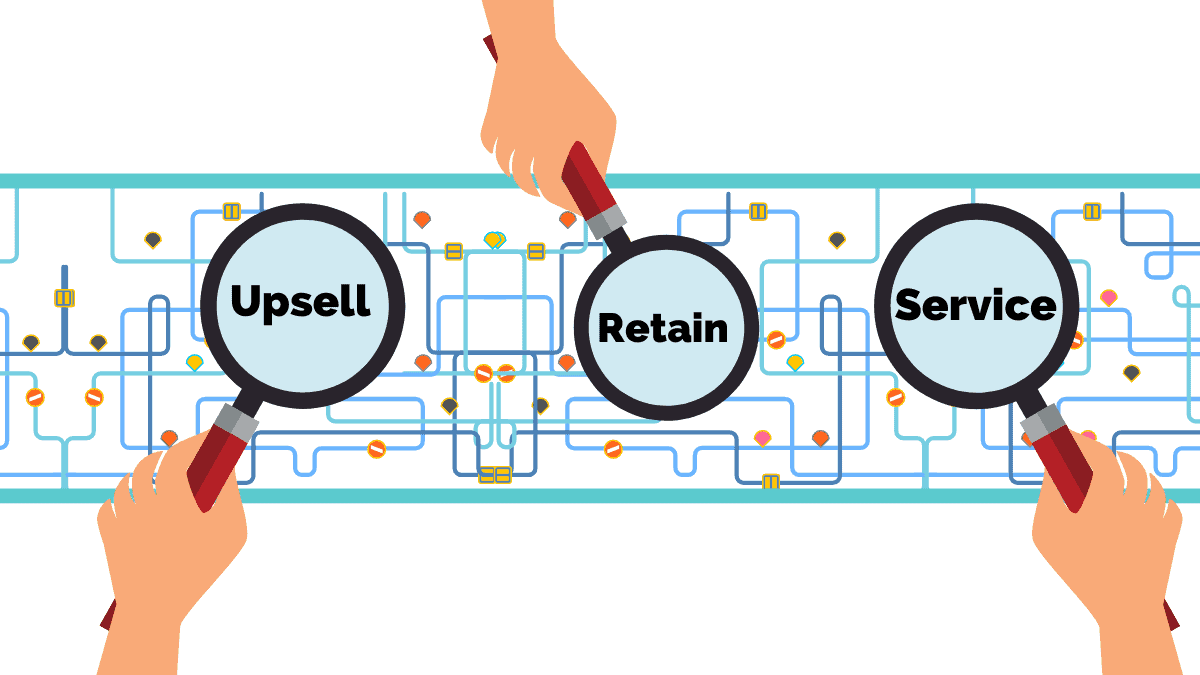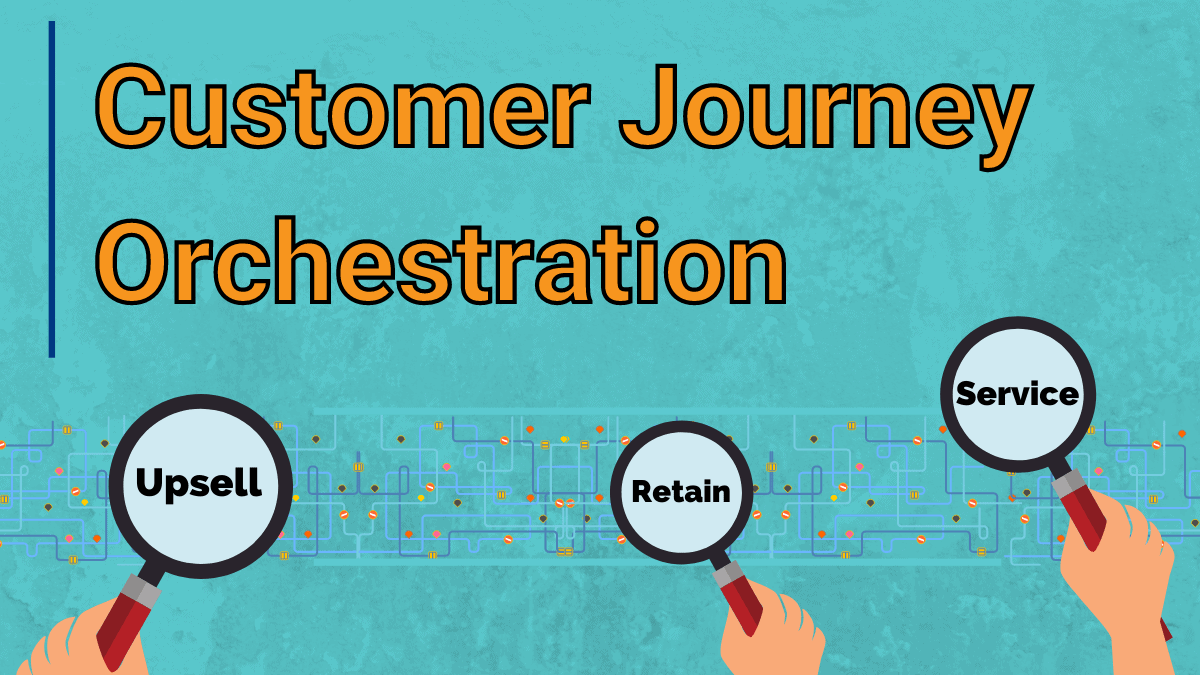There are a lot of ways to explain customer journey orchestration. Most of them are confusing.
Is that because customer journey orchestration itself is confusing?
Maybe. But let’s try for an explanation that doesn’t make anyone’s brain hurt, and answer a few important questions along the way.
In this post:
- What is customer journey orchestration?
- How is it different from journey mapping?
- What are the core concepts?
- What are the benefits?
- Is this tech here to stay?
- Your guide to conversational AI (eBook)

What is customer journey orchestration?
Journey Orchestration (JO) is a tech-driven process to identify, analyse and improve each element of customer experiences.
It’s been described as a way to ‘bring customer experience to life’ and ‘a way to manage all CX data spread throughout a business.’

Ok, great. But I still can’t picture it.
Fair enough. Let’s look at this in stages.
The folks at Thunderhead, for example, look at four stages for JO:
- Listen – An orchestration tool integrates with other systems and data sources. That allows it to recognize your customers as they start interactions across any touchpoint.
- Understand – This is your real-time element. You can see customers wherever they are, at the macro or individual level. That flags up service bottlenecks and friction points that you should act on.
- Act – You’ve got the data… how do you use it? Your JO tool of choice should provide flexible tools to adjust your service. That means smoother transitions between channels and a lot more consistency in the service customers find there.
- Impact – You measure the outcomes. Taken as a whole, the goal for JO can be very broad – better services – but your focus could be retention, satisfaction cost-to-serve or… basically whatever your priorities are.
Is this different from customer journey mapping?
Yes – in the same way a map is different from a vacation.
Don’t get me wrong, customer journey mapping remains a valuable activity. But just as you need to act on data from customer feedback, you need to do something tangible with the customer journey map you create.
Let’s put that another way: you can map journeys all day long. But the next step is where most businesses trip up and face-plant on the sidewalk.
You have to improve the journeys that you’ve mapped. Otherwise all you’ve got is a list of reasons customers leave.
Customer journey orchestration aims to make journey mapping a live, ongoing process. It also adds the tools for positive change to your toolbox. (At least, that’s the theory!)
What are the core concepts I should know about?
Good question. Let’s run through some of them:
Integration – JO works by bringing data from multiple sources into a single location. Think mission control with you at the desk. The data you need already exists. You just need to round it up.
(Interested in integration? Read up on how APIs enhance contact center services.)
Automation – The key to doing anything at scale is automating as much as possible. JO exposes key points in journeys which are prime candidates for more automation.
Prediction – Customer journey orchestration is predictive in that it tracks customer behaviours to ‘learn’ how their journeys typically progress.
(Struggling to get your head around the ‘predictive’ part? Read up on pre-emptive contact center services.)
Personalization – A combination of customer profiling, real-time analysis and flexible contact handling methodologies means you can individualize service for each customer.
Source
Talk brass tacks – what are the actual benefits?
I’m going to hit you with some statistics, ok?
Here’s why CX-focused businesses get serious about customer journeys:
They can make more effective changes – Businesses are always trying to improve. How many get it right?
Few. The success rate for continuous improvement efforts is less than 60%. That weak performance is driven by ‘unstructured and ad hoc’ approaches to the task.
They can focus on the ‘macro’ of journey design – Customers are 73% more likely to rate themselves ‘satisfied’ when businesses focus on journeys rather than touchpoints.
They can deliver consistent omnichannel service – CX and contact center professionals rate this as one of their highest priorities. In fact, it’s joint first with ‘reducing the cost of operations’ and a couple of points ahead of ‘increasing Customer Lifetime Value’.
Source
They can integrate more systems, more easily – Making the customer journey work means getting data, which means integration. More than half of businesses say that departments are siloed, making it difficult to work across the organization or connect all service processes.
They can offer a deeply personalized service – Here’s what it all comes down to; offering the customer the right service for them, based on their actions and the best available data.
Personalized service is a priority for 59% of customers!
I’m still skeptical… is Customer Journey Orchestration just a buzzword?
It is a buzzword. Sure. Just like Robotic Process Automation was a few years ago.
Businesses have always needed to keep track of customer experience. They have more data than ever but that data is harder to process.
They have better, smarter systems than before, but those systems are siloed.
They can offer more channels but service will vary wildly across them.
Those are the problems. Now, we’re waiting to see whether customer journey orchestration is the solution.





